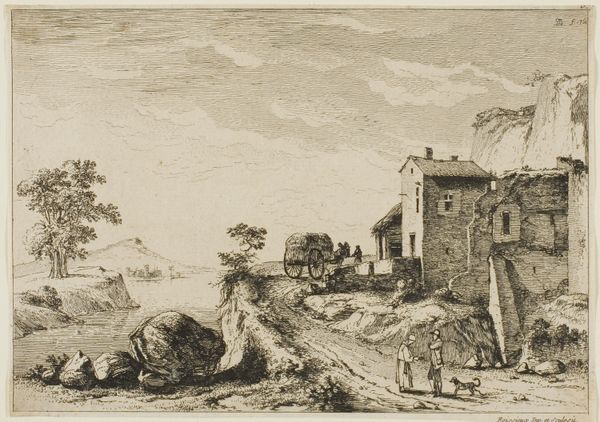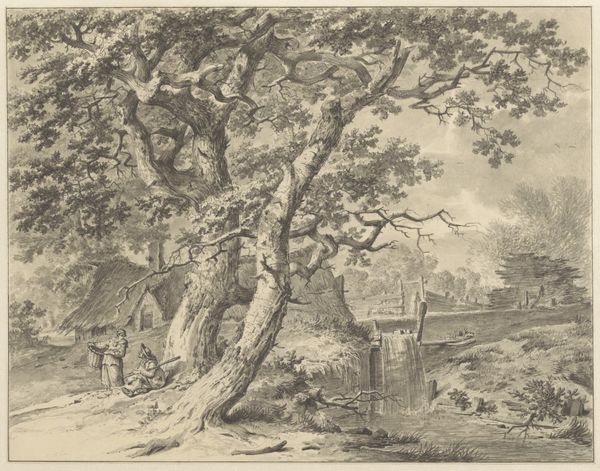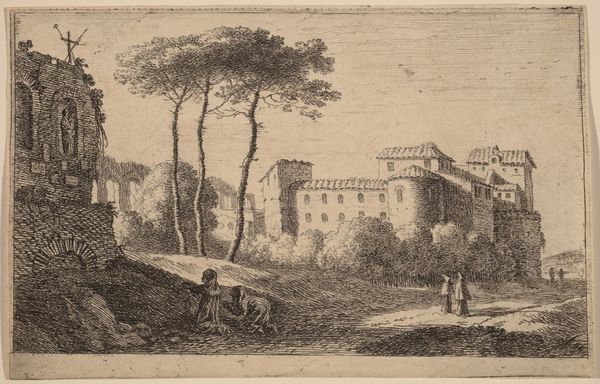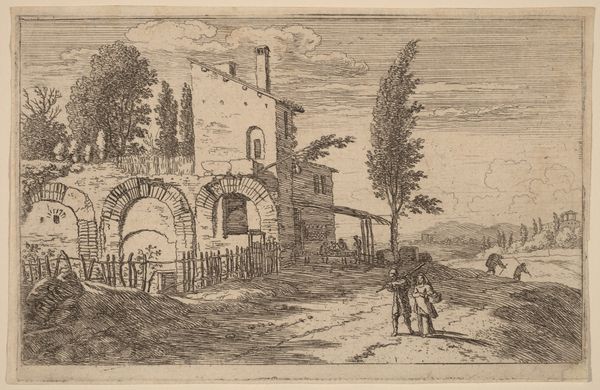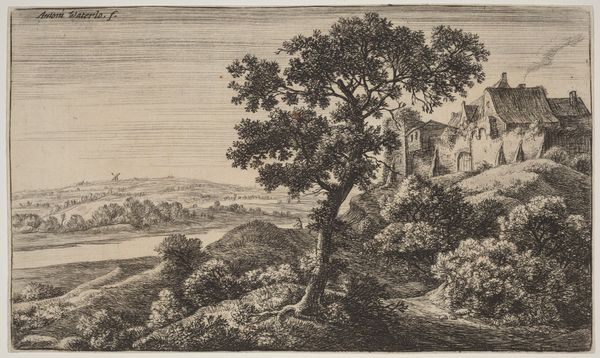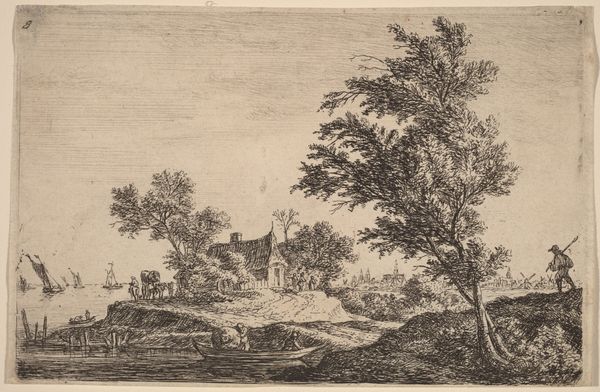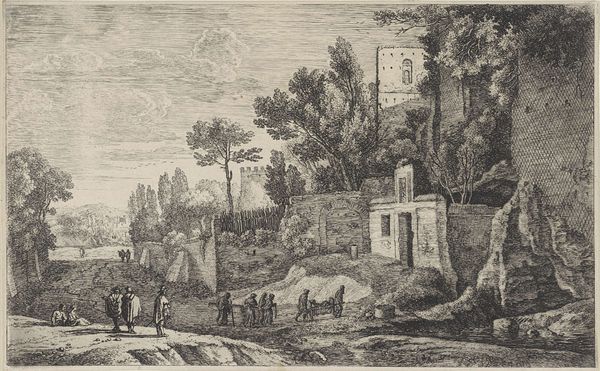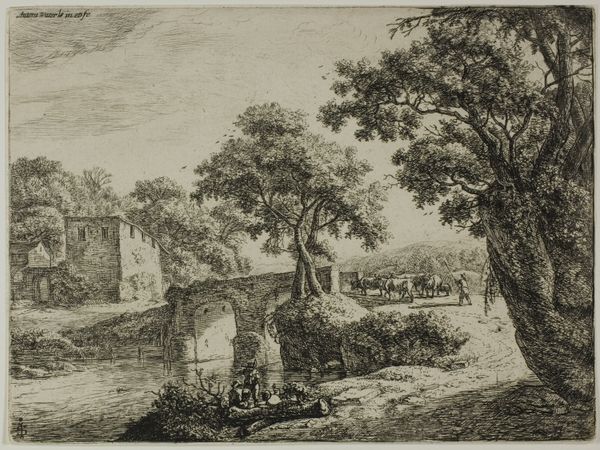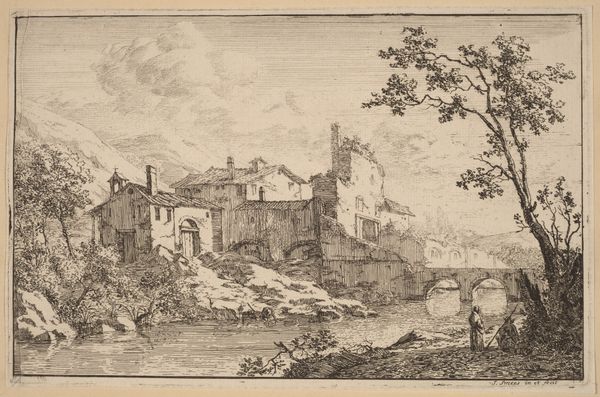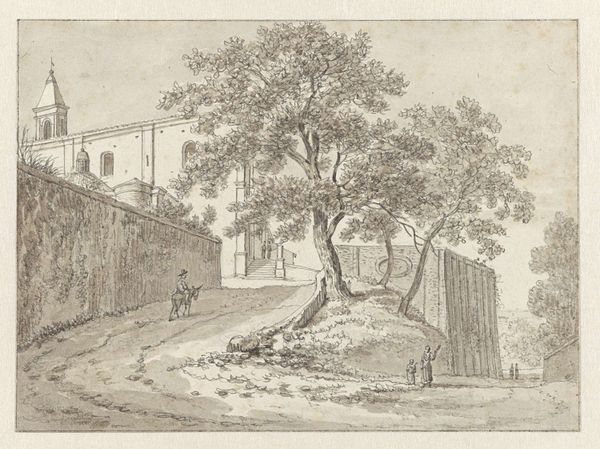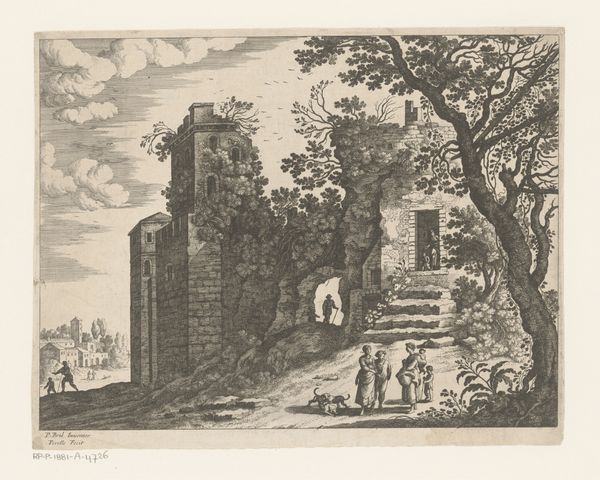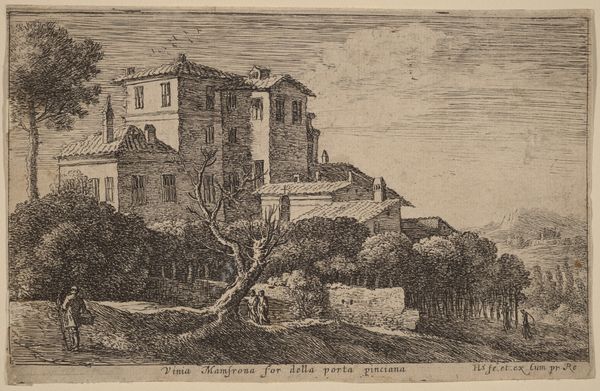
print, etching
#
baroque
# print
#
etching
#
landscape
Copyright: National Gallery of Art: CC0 1.0
Editor: Here we have "The Bent Tree," an etching by Herman van Swanevelt, a Baroque-era landscape piece. There's something compelling about the way the landscape and the architectural forms dominate the figures; what strikes you first when you look at this print? Curator: Immediately, it’s the formal arrangement. Observe how the strong diagonal of the bent tree trunk is echoed in the slope of the hill, creating a dynamic interplay of lines that leads the eye towards the architectural structure in the background. The foreground figures, seemingly incidental, actually serve to accentuate the scale and depth of the composition. How do you perceive the artist's use of light and shadow in creating form? Editor: The hatching technique definitely adds to the dimensionality of the building and the tree's foliage, especially. Curator: Precisely. Note the varying densities of the etched lines: Swanevelt masterfully manipulates the medium to simulate volume and texture. Look at the foreground: see how densely packed the lines are compared to the sky. This juxtaposition serves to heighten the viewer's perception of space and form, a quintessential element in understanding the picture's structure. What sort of effect does this choice generate in you? Editor: The high contrast and detailed foreground does bring the front forward; so I would describe the image as highly formalistic for a landscape piece. Curator: Indeed. One finds pleasure in analyzing these works on a structural level. It speaks to the intrinsic elements and craftsmanship rather than an illustration with heavy context. Editor: Yes, examining how each element relates and adds to the composition creates another entry point into landscape art. Curator: Seeing those building blocks brings so much into perspective!
Comments
No comments
Be the first to comment and join the conversation on the ultimate creative platform.
